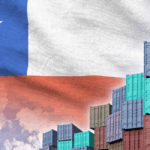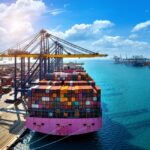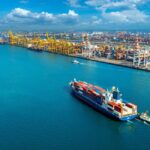Special Economic Zones (SEZs) are one of the most effective tools for promoting economic and commercial development in various regions around the world. Thanks to a combination of tax incentives, bureaucratic simplifications and business incentives, these zones offer unique opportunities for companies looking to grow and expand their presence in international markets. But what exactly are SEZs, and how can businesses benefit from them?
In this article, we will take a detailed look at how SEZs work, exploring their advantages, the opportunities they offer to companies, and successful global examples. Additionally, we will discuss the challenges associated with this economic model and future prospects, providing businesses with a clear guide on how to best leverage these zones.
Ready? Let’s get started!
What Does Special Economic Zone Mean?
Special Economic Zones are geographically defined areas where favorable tax and administrative regulations are applied to encourage productive and commercial activities. The main goal is to stimulate investment, improve exports, and promote industrial development.
In practice, an SEZ is an area that offers particularly advantageous conditions to businesses, such as reduced tax burdens, simplified bureaucratic regulations, and easier access to foreign markets. Often located near strategic ports and intermodal hubs, these zones are designed to facilitate international trade and encourage local industrialization.
Globally, SEZs have proven to be an effective tool for attracting foreign capital and enhancing a country’s competitiveness. Thanks to their ability to lower entry barriers for investors, they serve as a key driver of economic growth, especially in less developed regions.
What Are the SEZs in Italy for 2024-2025?
As of January 1, 2024, Italy has introduced the Single SEZ for the South, merging the previously existing SEZs into a single structure. This reform covers eight regions: Abruzzo, Basilicata, Calabria, Campania, Molise, Puglia, Sicily, and Sardinia.
The decision to unify the existing SEZs stems from the need to simplify and make access to incentives and support tools more efficient for businesses. In the past, the fragmented management of SEZs made it difficult for companies to navigate different regulations and complex procedures. With the new Single SEZ, the entire system has been centralized to attract larger investments and ensure greater consistency in the application of incentives.
The sectors involved range from logistics to manufacturing, agribusiness, and raw material processing. This means that, as in other emerging economies, both large corporations and SMEs can find interesting opportunities within SEZs, especially those focused on exports.
What Are the Benefits of SEZs?
Special Economic Zones offer several significant advantages to businesses that choose to invest within them. One of the main benefits involves tax incentives, allowing companies to obtain tax credits of up to 100% on investments made. This incentive is designed to stimulate the growth of productive and industrial activities, providing a concrete advantage to those who establish themselves in an SEZ.
In addition to tax benefits, SEZs also guarantee bureaucratic simplifications, a crucial aspect for businesses that often face long and complex administrative procedures. In other words, the ability to access streamlined procedures and reduced authorization times enables companies to start and manage their operations more efficiently.
Another key advantage is the exemption from customs duties for goods intended for processing and subsequent export. This benefit allows businesses to significantly reduce operational costs and increase their competitiveness in international markets. Furthermore, SEZs often enjoy a strategic location, with advanced logistics infrastructures such as ports, airports, and rail hubs that facilitate the transport and distribution of goods.
However, certain criteria must be met to access these benefits. Specifically, only investment projects with a total cost of at least 200,000 euros are eligible for incentives. This requirement ensures that resources are allocated to economically and industrially relevant initiatives. Additionally, the maximum eligible investment is capped at 100 million euros per project, a limit designed to maintain control over the distribution of incentives and ensure a fair use of available resources.
SEZs are not just an opportunity for large corporations but also for small and medium-sized enterprises looking to expand and compete globally. Thanks to the combination of tax incentives, bureaucratic simplifications, and strategic infrastructure, these zones offer an appealing option for those aiming to reduce production costs and increase operational efficiency.
Who Can Benefit from SEZs?
SEZs are accessible to all businesses, regardless of their size. However, to benefit from the incentives, companies must meet certain fundamental requirements. First, businesses must maintain operations within the zone for at least five years and present a detailed investment plan. This ensures that the incentives are used for solid and long-term projects.
Additionally, companies in liquidation or dissolution are not eligible for the benefits. Some industries, such as the steel industry, energy production, and financial sector, are excluded from the incentives in compliance with European state aid regulations.
Examples of Successful Special Economic Zones Worldwide
SEZs have been successfully implemented in many parts of the world, proving their effectiveness in fostering economic growth.
Shenzhen, China
In the 1980s, Shenzhen was a small fishing village. The establishment of the SEZ transformed this location into one of the most industrialized cities in the world, attracting billions of dollars in investments and becoming a major hub for technology and manufacturing.
Jebel Ali Free Zone, Dubai
The Jebel Ali Free Zone (JAFZA) is one of the most important SEZs in the Middle East. Located near the Port of Dubai, it is a strategic hub for global trade and hosts over 9,500 companies from around the world.
Special Economic Zones in Poland
Poland has established several SEZs that have attracted billions of euros in investments, generating over 280,000 new jobs. This model has significantly contributed to the country’s industrial development and its integration into global markets.
Challenges of Special Economic Zones
Despite the numerous benefits, SEZs present some challenges that must be carefully considered. One of the main issues is bureaucratic complexity, which in some cases can slow down access to incentives and create administrative difficulties for businesses.
Another factor to consider is the environmental impact. Industrial expansion in SEZs can negatively affect the local ecosystem, especially if adequate sustainability measures are not implemented. Additionally, there is a risk of market distortions, with businesses outside SEZs potentially facing competitive disadvantages compared to those operating within these privileged areas.
Despite these challenges, Special Economic Zones represent an extraordinary opportunity for businesses and regional economic development. The introduction of the Single SEZ for Southern Italy confirms the importance of these tools in promoting investments and enhancing the country’s global competitiveness.
Looking ahead, ensuring the effective and transparent management of SEZs will be crucial for them to continue providing tangible benefits for businesses and local economies.
In conclusion, for companies operating in international logistics, such as CTI, SEZs offer a unique opportunity to optimize operations and access new markets. If your company is considering an investment in SEZs, CTI is ready to assist you with tailored logistics solutions to support your success.
Contact us for a personalized consultation!










